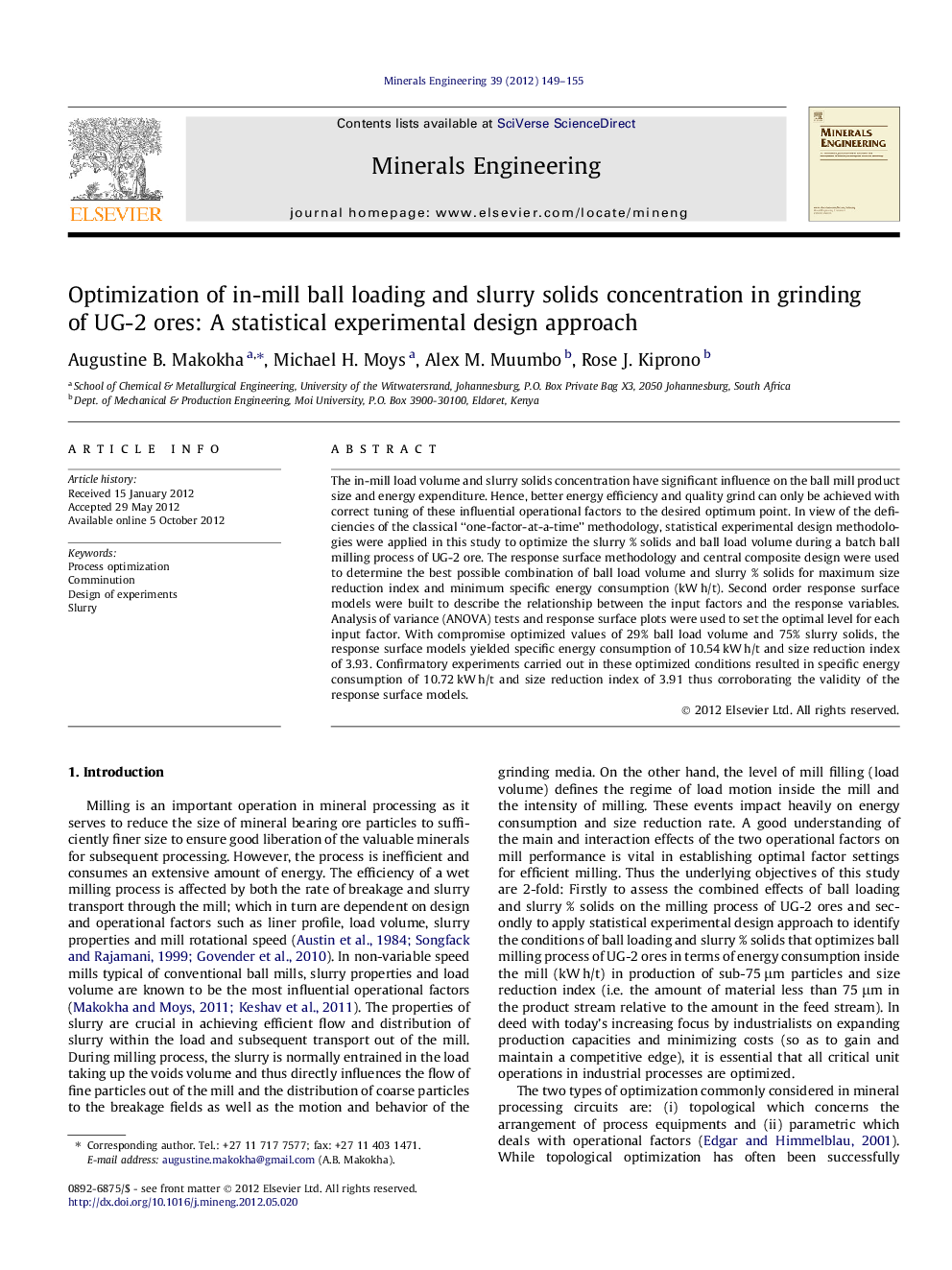| کد مقاله | کد نشریه | سال انتشار | مقاله انگلیسی | نسخه تمام متن |
|---|---|---|---|---|
| 233592 | 465353 | 2012 | 7 صفحه PDF | دانلود رایگان |

The in-mill load volume and slurry solids concentration have significant influence on the ball mill product size and energy expenditure. Hence, better energy efficiency and quality grind can only be achieved with correct tuning of these influential operational factors to the desired optimum point. In view of the deficiencies of the classical “one-factor-at-a-time” methodology, statistical experimental design methodologies were applied in this study to optimize the slurry % solids and ball load volume during a batch ball milling process of UG-2 ore. The response surface methodology and central composite design were used to determine the best possible combination of ball load volume and slurry % solids for maximum size reduction index and minimum specific energy consumption (kW h/t). Second order response surface models were built to describe the relationship between the input factors and the response variables. Analysis of variance (ANOVA) tests and response surface plots were used to set the optimal level for each input factor. With compromise optimized values of 29% ball load volume and 75% slurry solids, the response surface models yielded specific energy consumption of 10.54 kW h/t and size reduction index of 3.93. Confirmatory experiments carried out in these optimized conditions resulted in specific energy consumption of 10.72 kW h/t and size reduction index of 3.91 thus corroborating the validity of the response surface models.
Figure optionsDownload as PowerPoint slideHighlights
► Combined effects of slurry % solids and ball load on milling of UG-2 ore are studied.
► Central composite design and response surface methodology (RSM) are applied.
► Response variables are specific energy consumption and size reduction index.
► Optimized input factors levels combination are ∼29% ball load and ∼75% slurry solids.
► Test results at these conditions corroborates the validity of the RSM models.
Journal: Minerals Engineering - Volume 39, December 2012, Pages 149–155